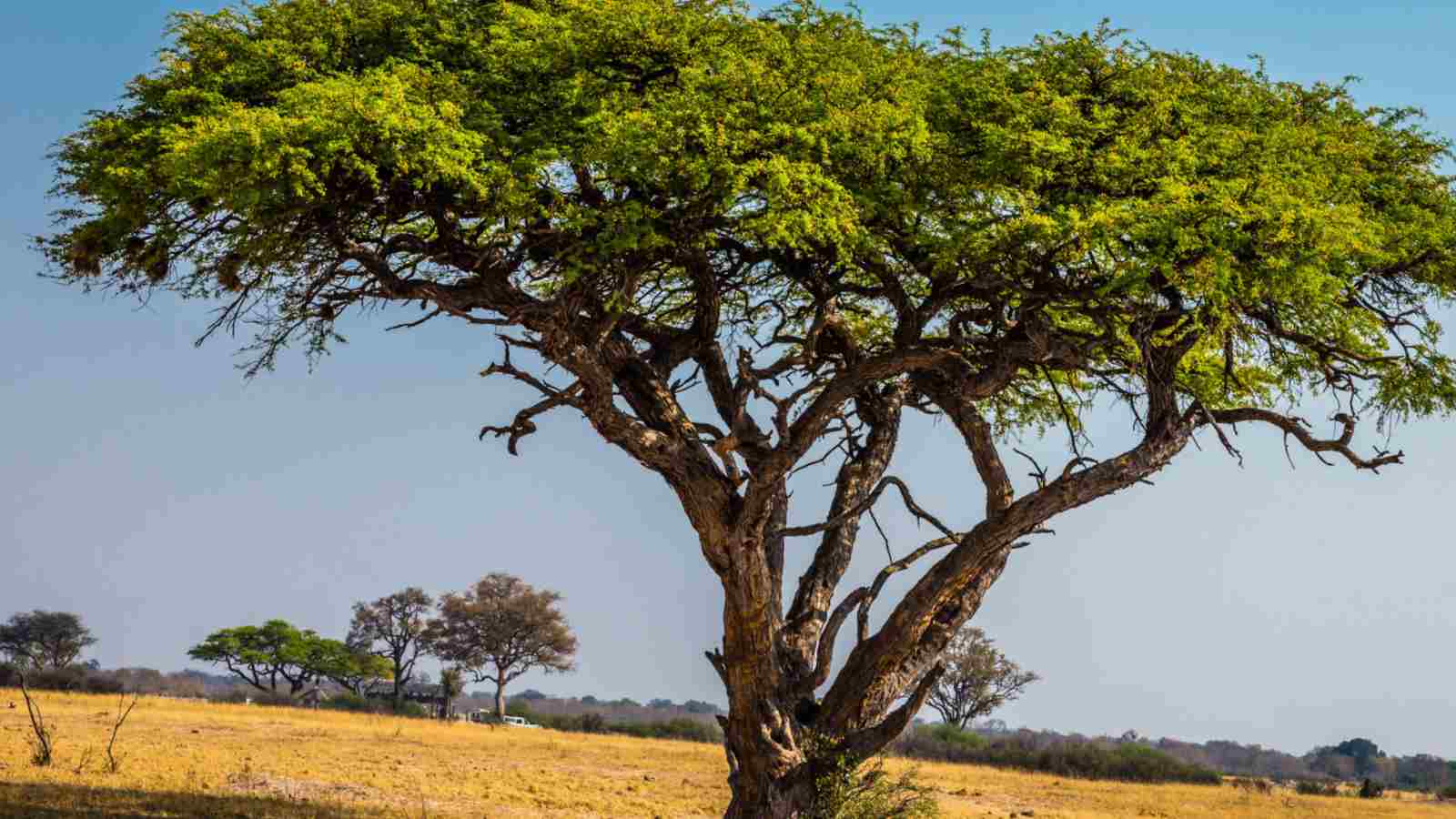
The Shittah tree, also known as the acacia tree, holds a significant place in history, culture, and ecology. Its presence spans across various regions, from the biblical landscapes of the Middle East to the savannas of Africa. This remarkable tree, with its distinct features and valuable contributions to the ecosystem, has captured the fascination of botanists, environmentalists, and enthusiasts alike. In this article, we delve into the intriguing world of Shittah trees, uncovering their unique characteristics, ecological importance, and historical significance. Join us on a journey through the enchanting realm of these ancient trees as we unveil 20 captivating facts that shed light on their profound influence and enduring legacy.
Key Takeaways:
- The Shittah tree, also known as the Acacia tree, holds deep spiritual and cultural significance, symbolizing strength, resilience, and enduring traditions across various cultures and religious beliefs.
- Thriving in harsh environments, the Shittah tree’s enduring presence in history, its ecological contributions, and its use in traditional practices highlight the interconnectedness of nature, culture, and spirituality.
The Shittah tree is mentioned in the Bible.
With numerous references in the Bible, the Shittah tree is revered for its role in the construction of the Ark of the Covenant and the Tabernacle.
It is associated with spiritual symbolism.
The Shittah tree is linked to concepts of strength, incorruptibility, and resilience in many religious and spiritual beliefs.
The wood of the Shittah tree is highly durable.
Due to its robust nature, the wood of the Shittah tree has been used in crafting furniture, musical instruments, and other enduring items.
It is native to the Middle East and Africa.
The Shittah tree thrives in arid and semi-arid regions, displaying its adaptability to harsh climates.
The tree is known for its thorny branches.
The Shittah tree’s distinctive thorns serve as a natural defense mechanism, protecting it from potential threats.
It produces vibrant yellow flowers.
During the blooming season, the Shittah tree adorns itself with clusters of beautiful, fragrant yellow flowers.
The Shittah tree’s seeds are used in traditional medicine.
In various cultures, the seeds of the Shittah tree are utilized for their medicinal properties, offering potential health benefits.
It plays a role in ecological conservation.
The Shittah tree contributes to soil stabilization and erosion control, playing a vital role in preserving the environment.
The tree is a source of sustenance for wildlife.
Birds, insects, and mammals rely on the Shittah tree for food and shelter, highlighting its ecological significance.
The Shittah tree is a symbol of peace and prosperity.
In some traditions, the presence of the Shittah tree is associated with harmony, abundance, and blessings.
The wood of the Shittah tree is resistant to decay.
Its natural resistance to decay makes the wood of the Shittah tree highly sought after for various construction and artisanal purposes.
The tree has cultural and historical significance.
The Shittah tree’s enduring presence in ancient texts and artifacts underscores its enduring cultural and historical importance.
It is revered for its spiritual connotations.
In many belief systems, the Shittah tree is regarded as a symbol of purity, sanctity, and divine connection.
The Shittah tree is utilized in traditional crafts.
Artisans and craftsmen incorporate the wood of the Shittah tree into intricate carvings and decorative pieces, showcasing its aesthetic appeal.
The tree is known for its resilience in harsh conditions.
Thriving in arid environments, the Shittah tree exemplifies resilience and adaptability in the face of adversity.
It holds significance in traditional ceremonies.
The Shittah tree features prominently in various ceremonial practices, symbolizing strength, endurance, and spiritual fortitude.
The tree’s leaves are used in herbal remedies.
In certain cultures, the leaves of the Shittah tree are harnessed for their healing properties, offering potential therapeutic uses.
The Shittah tree is an emblem of enduring traditions.
Its enduring presence in cultural practices and historical narratives cements the Shittah tree as a symbol of continuity and heritage.
It serves as a reminder of the interconnectedness of nature and spirituality.
The Shittah tree’s profound symbolism underscores the deep-rooted connection between the natural world and spiritual beliefs.
The Shittah tree embodies the resilience and enduring legacy of nature.
With its rich symbolism, historical significance, and ecological contributions, the Shittah tree stands as a testament to the enduring power of nature and the profound impact of its presence.
The Shittah tree's profound symbolism and enduring legacy offer a captivating glimpse into the intricate relationship between nature, culture, and spirituality. From its historical significance to its ecological contributions, the Shittah tree continues to inspire awe and reverence across diverse traditions and landscapes, embodying the resilience and enduring legacy of nature itself.
Conclusion
In conclusion, the shittah tree, also known as the acacia tree, holds a rich historical and cultural significance while also contributing to various ecosystems and providing valuable resources. Its durable wood has been used for millennia in construction and sacred rituals, and its presence in the Bible adds to its mystique. The tree's resilience in arid regions and its ability to support diverse wildlife underscore its ecological importance. As we continue to appreciate and study the shittah tree, it remains a symbol of strength, adaptability, and enduring legacy.
FAQs
What is the significance of the shittah tree in religious texts?The shittah tree, mentioned in the Bible as the acacia tree, holds religious significance due to its role in constructing the Ark of the Covenant and the Tabernacle. Its durable wood symbolizes strength and endurance in religious contexts.
How does the shittah tree contribute to its ecosystem?The shittah tree, with its deep roots and ability to thrive in arid conditions, provides vital shade and sustenance for various wildlife, contributing to the biodiversity of its surrounding ecosystem.
Was this page helpful?
Our commitment to delivering trustworthy and engaging content is at the heart of what we do. Each fact on our site is contributed by real users like you, bringing a wealth of diverse insights and information. To ensure the highest standards of accuracy and reliability, our dedicated editors meticulously review each submission. This process guarantees that the facts we share are not only fascinating but also credible. Trust in our commitment to quality and authenticity as you explore and learn with us.


